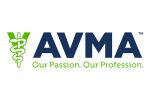After considered discussion and debate, the American Veterinary Medical Association Winter House of Delegates today approved a revised version of the AVMA policy on declawing of domestic cats.
The revision shortened and simplified the language in the document. The core meaning and intent of the policy are unchanged. The new policy reads as follows:
 The AVMA discourages the declawing (onychectomy) of cats as an elective procedure and supports non-surgical alternatives to the procedure. The AVMA respects the veterinarian’s right to use professional judgment when deciding how to best protect their individual patients’ health and welfare. Therefore, it is incumbent upon the veterinarian to counsel the owner about the natural scratching behavior of cats, the alternatives to surgery, as well as the details of the procedure itself and subsequent potential complications. Onychectomy is a surgical amputation and if performed, multi-modal perioperative pain management must be utilized.
The AVMA discourages the declawing (onychectomy) of cats as an elective procedure and supports non-surgical alternatives to the procedure. The AVMA respects the veterinarian’s right to use professional judgment when deciding how to best protect their individual patients’ health and welfare. Therefore, it is incumbent upon the veterinarian to counsel the owner about the natural scratching behavior of cats, the alternatives to surgery, as well as the details of the procedure itself and subsequent potential complications. Onychectomy is a surgical amputation and if performed, multi-modal perioperative pain management must be utilized.
What does the new declawing policy mean?
Though the language was revised, its content is fundamentally the same:
- The AVMA does not support routine declawing.
- Declawing should only be undertaken if it is medically necessary, or if alternatives to eliminate harmful or destructive scratching have failed and the cat is about to be relinquished or abandoned.
- Veterinarians and cat owners must work together to make a decision that will provide optimal health and welfare for their pet and family.
- Veterinarians are urged to thoroughly educate cat owners about normal scratching behaviors of cats and provide support as their clients explore and implement alternatives to declawing. These include nail trimming, providing a variety of scratching surfaces, and positive reinforcement training.
The AVMA provides resources to assist with client education and the decision-making process at avma.org/declaw.
It is important to note that AVMA professional policies are reviewed regularly every five years. The policy on declawing of domestic cats was last reviewed in 2014, and this update occurred as part of the regular review schedule.
Some delegates noted while the policy does not go as far as the American Association of Feline Practitioners for example, it is a strong step in the right direction. Other delegates also noted that public sentiment has changed and while the individual veterinarian is in the position to determine what is best for the individual patient, this revised policy is much needed.
The HOD approved the revised policy during its regular winter session at the Veterinary Leadership Conference in Chicago, and the HOD’s meeting agenda includes a link to the language from the previous policy.

